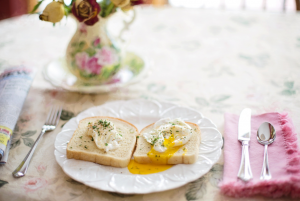Poaching an Egg: Your Essential Guide
You might be the very best ‘Sunday dinner multi-tasker out there’ (seriously, how many elements are there in a roast?!), but can you poach an egg?
It should be one of the most simple cooking exercises out there, yet so many people still get it wrong. Frying’s relatively simple – and so’s boiling. But there’s something about the word ‘poaching’ that just throws people off, isn’t there?
So what exactly is the best way to poach an egg? Do you use vinegar or do you go without? The answer is find the method that works for you – and stick to it.
Here’s just a few you can try if your current egg poaching technique just isn’t cutting it:
The BBC Good Food Method
Everyone trusts the BBC, don’t they? So maybe this is the method for you – but make sure you act fast if you decide to make this one your egg poaching technique of choice; the site is due to take all its recipes down soon. Sob.
- Start by filling a small pan just over one third full with cold water
- Bring it to the boil, add one tablespoon of white wine vinegar and turn down to simmer
- Crack your eggs one at a time into a small bowl and gently tip them into the simmering water
- Now let the water do its work by lightly poaching the eggs for around three to four minutes
- Finally, remove your perfectly-formed eggs with a slotted spoon and drain on kitchen towels.
The Jamie Oliver Method
You thought you had it sorted when you saw the BBC poaching egg method, didn’t you? But who do you trust more: the BBC or Jamie Oliver? It’s a toughie, isn’t it? Anyway, here’s the egg poaching guide you might not be able to live without, via one of TV’s best-loved celeb chefs…
- Begin with a wide, casserole-esque pan and fill it with boiling water from the kettle.
- Now, bring it to a light simmer over a medium heat
- Add a pinch of salt and crack one of your eggs into a cup, gently pouring it into the water in one fluid movement. If you have more eggs to cook, repeat this process with the rest of them
- Jamie says you should see the poached egg form almost immediately. Now simply let them cook for two to four minutes
- To check whether they’re ready, remove one egg carefully from the pan with a slotted spoon and give it a little push with a teaspoon. Does it feel too soft? Simply put it back and give the eggs a minute or two more in the water to firm up – et voila!
Rose Prince’s Perfectly Poached Egg Method
Now, here’s a quirky one via Rose Prince at The Telegraph – fancy giving this one a go? We bet you’re itching to try it. Here’s how to do it…
- Grab a piece of cling film (at least 9in/23cm square) and place it over a ramekin or tea cup, pushing it down into the recess with your fingers
- Now, crack an egg into it then twist up the surplus cling film so you have what looks like a little pouch
- It’s now time to bring a pan (half full of water) to simmering point, before lowering the pouch containing the egg into it
- Simmering time! Simmer until the white is firm but the yolk isstill runny and simply lift out and plunge into a bowl of cold water to prevent further cooking
- Finally, unwrap carefully. The film may stick to the egg slightly, but free it gently with your fingers before serving up a breakfast treat!


